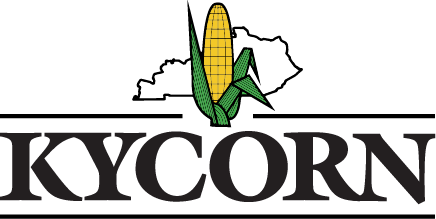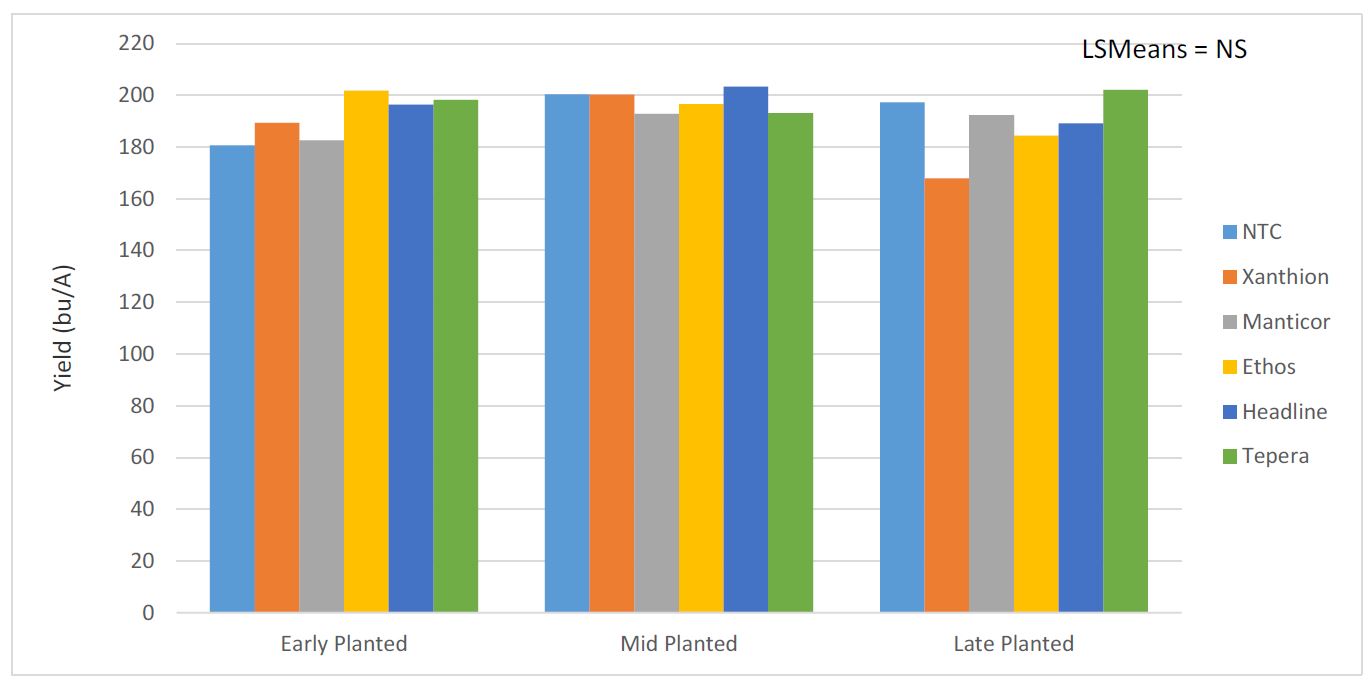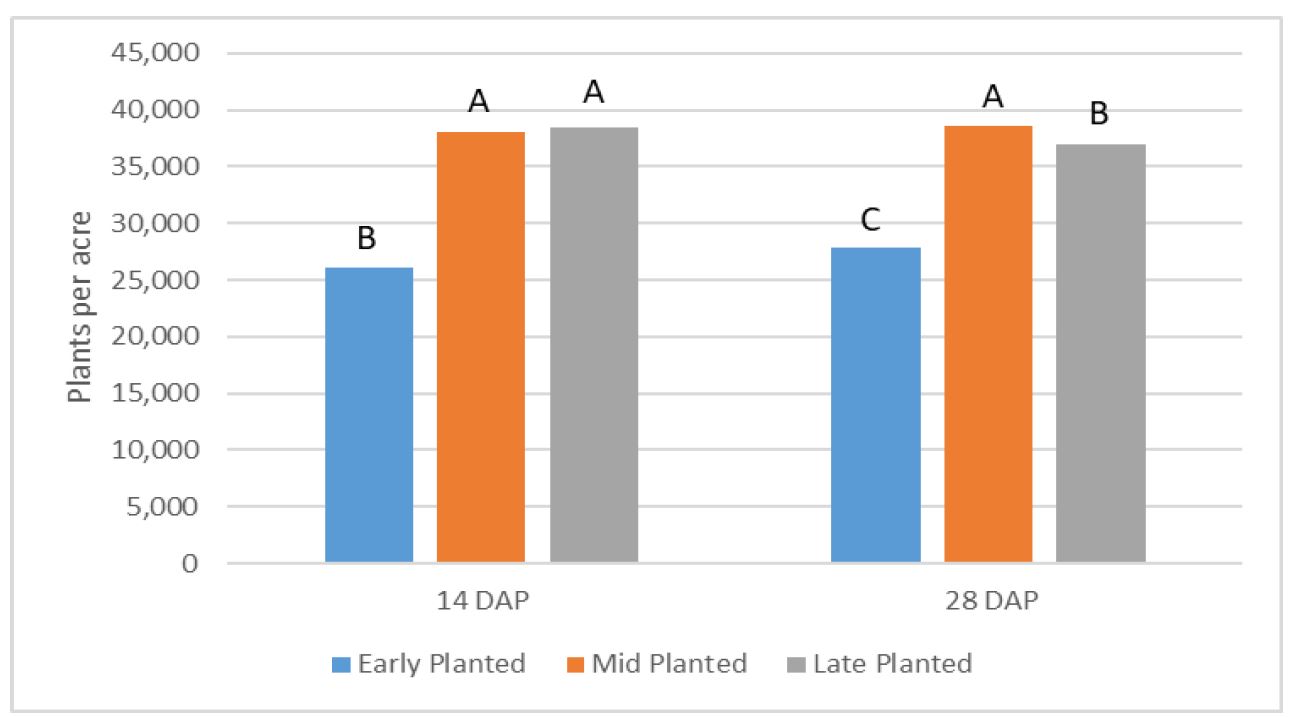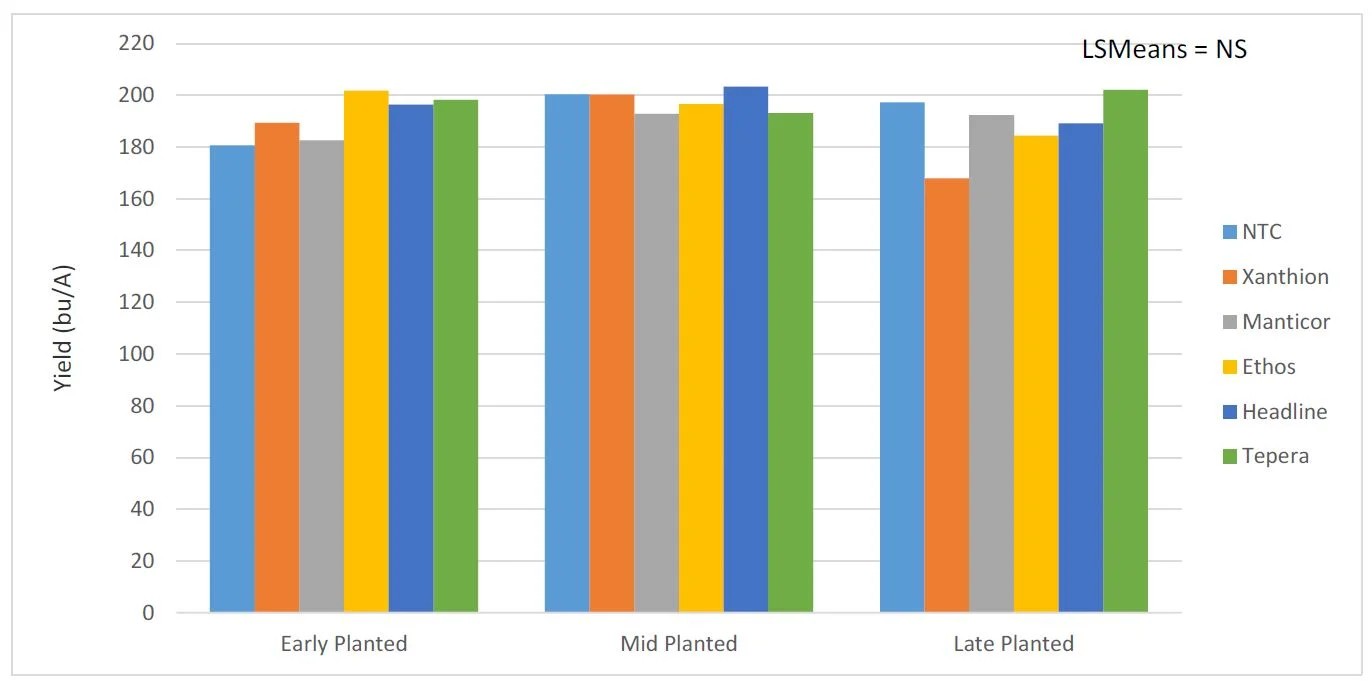Kiersten Wise – University of Kentucky
Introduction:
In-furrow fungicide use in corn has increased in recent years, with these products promoted to increase plant populations, plant vigor, and yield. Previous research in the Midwest has indicated that newly available fungicides and biofungicides may provide a yield benefit in certain fields, particularly when corn is planted early. However, very few replicated field research trials have been conducted in Kentucky, and additional research is needed to help us understand under what environmental conditions in-furrow fungicides will provide a benefit.
Objectives:
1. Examine how planting date influences the efficacy of in-furrow fungicide and biofungicide products and measure product effects on disease control, plant population and yield.
2. Disseminate results to stakeholders through multiple formats, including UK County Agents, meetings, print and web resources.
Materials and Methods:
Research plots were established at the University of Kentucky Research and Education Center in Princeton, KY. Plots were planted at 3 planting dates: April 20, May 2, and May 25. Six treatments (Table 1) were replicated four times in a randomized complete block design. Plots were planted with a small-plot planter at a target population of 32,000 seeds/acre on 30-in. row spacing, and 30-ft in length.
Table 1. Treatments, active ingredients, and rates of in-furrow products used in the trial established at the University of Kentucky Research and Education Center in Princeton, KY, 2018.
Plant populations were assessed twice, at 14 days after planting, and 28 days after planting by counting each plant in the center 10 ft. of the two inner plot rows, and converted to plants per acre. Plants assessed for stand were also visually rated for seedling disease by observing damping-off, stunting, or other symptoms of seedling disease. Dataloggers were placed in the plots to measure soil moisture and temperature throughout the experiment to correlate environmental conditions and planting date with treatment results. Yield, grain moisture and test weight were collected from the inner two rows of the plot and adjusted to 15.5% grain moisture (Table 2). Data were analyzed using mixed models and treatment means separated using least square means.
Table 2. Planting and harvest dates for experiment to examine effect of in-furrow fungicides on plant stand, disease severity and yield at the University of Kentucky Research and Education Center in Princeton, KY, 2018.
Year 1 Results:
Of the factors tested (planting date and fungicide treatment), only planting date significantly impacted stand at 14 and 28 days after planting (DAP; Figure 1). Stand was significantly higher at both 14 and 28 DAP in trials established in May. Stand differences were not attributed to disease development, as no seedling blights were observed in the trial. Despite higher stands, planting date did not impact yield, and in-furrow fungicide treatment had no effect on stand or yield in this experiment (Figure 2).
Figure 1. Impact of planting date on plant stand in plants per acre 14 and 28 days after planting (DAP). Columns with different letters indicates that values are significantly different within stand date at the P = 0.05 level.
Figure 2. Impact of planting date and in-furrow fungicide treatment on yield at the University of Kentucky Research and Education Center in Princeton, KY, 2018. NTC = non-treated control. Neither plant date or fungicide treatment significantly impacted yield at the P = 0.05 level.
Conclusions
-
In-furrow fungicides did not improve plant population or yield at three planting dates (early, mid, late) at the UKREC research location in 2018.
-
Early (April) planted trials had lower plant population than trials planted in May, however this reduced stand did not result in reduced yield.
The first planting date target was originally late March, but cool, wet weather delayed planting until mid-April. Although planting was delayed, soil conditions were still cool and wet, and favorable for disease development. However, the field available for research may not have had a strong history of seedling disease, and this may have impacted results. Although plant population was reduced with early planting, the reduced population ultimately did not result in reduced yield.
Message and Benefit to Kentucky Corn Growers:
-
Farmers who do not have a history of seedling disease may not need in-furrow fungicides, even when planting into cool, wet conditions.
-
This research, although preliminary, indicates that farmers could save $10-22 per acre in in-furrow fungicide costs.
We are still analyzing weather data to determine how weather and soil conditions influenced results, and will update our research report after analysis is complete. Research results will be disseminated through Extension channels throughout Kentucky in 2019.
Future research:
This research helps us communicate to farmers that in-furrow fungicides may not be needed in all years and situations, even when planting early in cool, wet soils. Further research with inoculated trials to assess the impact of high disease pressure on in-furrow fungicide efficacy in corn.





